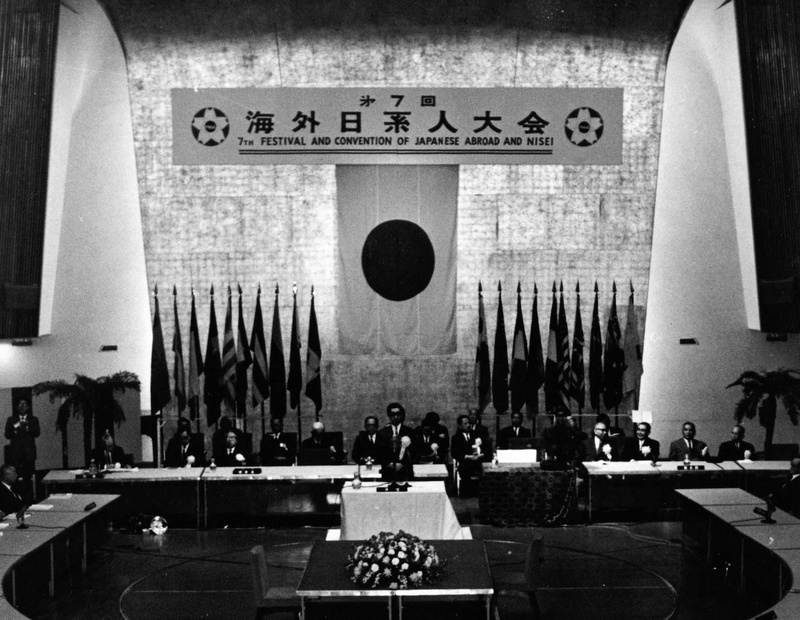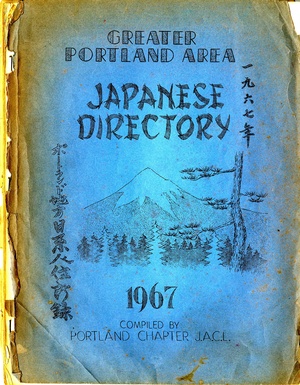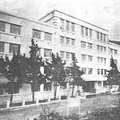Who does “Nikkeijin” refer to? Answering this question is not easy. Today they are defined as “Japanese immigrants who have moved overseas with the intention to live there permanently as well as their descendants.” However, this definition has changed greatly over time. And the intended meaning differs from one person to another. Those who use this term sometimes imply meanings that are different from the set definition. In such cases, the conversation gets difficult. Many Issei—or first generation immigrants—often consider themselves Japanese and think that those who were born as second-generation and beyond are Nikkeijin. In other words, they do not include themselves in the definition of Nikkeijin. On the other hand, when asked how many Nikkeijin exist, people tend to include Issei, which is contradictory in itself.
How did people start using the term Nikkeijin in the first place? Tracking past records, we found that it was first used in the postwar era. It seems that the term first appeared in print in the New York Binran (1948) from Hokubei Shinpo-sha in the United States and the Imin 40 nenshi (1949) from Gráfica Brasileira in Brazil. If we focus on the term “Nikkei” alone, we can see that it was used in “Nikkei Citizens” in Hokubei Nenkan (1928) from Hokubei Jiji-sha in the United States and “Nikkei Brazilian” in Brazil Nenkan (1933) from Brazil Jiho-sha in Brazil in almanacs of Japanese newspapers. However, the term “Nikkeijin” is not found in prewar publishing.
Since the 1950s, the term has been used widely in Nikkei communities overseas, appearing in publishing such as “Nikkei Population” in Paulista Nenkan (1950) from Paulista Shimbun-sha, “Nikkeijin Population” in the Brazil no Nikkeijin Jinkou Suikei (1957) by Kiyoshi Yamamoto and Tameyo Tsukada, “Nikkeijin Directory” in Zenbei Nikkei-jin Jushoroku (1959) by Saburo Kido and Portland Chihou Nikkeijin Jushoroku (1967) of Portland Chapter JACL and “Nikkeijin Association” in the Nikkeijin Souritsu 10 shunen Kinen-chou (1960) by the Seattle Nikkeijin Kai and so on.
What about in Japan? The Kaigai Nikkeijin Taikai (Convention of Nikkei and Japanese Abroad) has been held since 1957, and the terms such as “Nikkei organization” and “Nikkei society” have been used more commonly since then. On the other hand, in the Statistical Survey on the Japanese National Residing Overseas compiled by the Ministry of Foreign Affairs of Japan, the definition has varied from “the Japanese who do not have Japanese nationality” (1968), “the range cannot be determined,” to “there is a problem of whether we should consider children of mixed race with either one of their parents being Japanese as Nikkeijin.” (1986)
Even after the term “Nikkeijin” became common, people used it with different meanings. What meaning did people imply in each use? One hint can be found in translations. For example, the Portland Chihou Nikkeijin Jushoroku (1967) mentioned above is translated into English as “Greater Portland Area Japanese Directory.” The term “Nikkeijin” here is translated as “Japanese.” The term “Kaigai Nikkeijin” in Kaigai Nikkeijin Taikai has been changed from “Japanese abroad” (1966) to “Nikkei and Japanese Abroad” (exact year is unknown). It is unclear what Nikkei here refers to.
Indeed, it is rather natural for people to use the term “Japanese” differently from the time when the great majority of them were Issei to when their children and grandchildren—Nisei and Sansei—make up a large part of community. It not only refers to nationality, and the implied meaning in the term “Japanese” has changed as the way people see things changed over generations.
In the definition of “Nikkeijin” in the publishing from the Ministry of Foreign Affairs of Japan mentioned above, they did not make a decision on whether they should consider people of mixed race as “Nikkeijin,” as they stated that “there is a problem of whether we should consider children of mixed race with either one of their parents being Japanese as Nikkei” as of 1982. Regardless of whether people are mixed, the Ministry of Foreign Affairs of Japan did not change the definition to “those of Japanese descent” (The Statistical Survey on the Japanese National Residing Overseas) until 2002 in the 21st century.
If we look at it from a different perspective, we can see that the history of mixed race is deeply connected to how the definition has changed over time. These days, people of mixed race in Nikkei communities make up the majority of population in Canada, US, and Brazil, and thus they are not to be pointed at. Even in Japan, many people recognize that those of mixed race participate in sports such as track and field, and judo as representatives of Japan. Today only few people question whether those of mixed race are “Nikkeijin.” However, when Ariana Miyamoto was crowned Miss Universe Japan 2015, there was a debate on whether she should be seen as Japanese, which clearly shows the fact that some people still cannot accept those of mixed race as Japanese or as Nikkeijin.
Another important thing to note here is that the definition of “Nikkeijin” is something that’s given from a Japanese perspective and that Nikkei people today do not necessarily care what it means. In other words, they think that the term “Nikkei” has nothing to do with them or they simply refuse to be defined as such. This is not a problem of whether it’s a good thing or a bad thing, and no one can force them to accept the term. A famous celebrity in Brazil, Sabrina Sato, is known as japa do samba (a Jap of samba) and is of Japanese descent. She is definitely a Nikkeijin in the Japanese definition. We don’t know if she sees herself as Nikkeijin. According to one female Nikkei university professor, however, “Sabrina is not a Nikkei.” Why? Because “she is not part of Nikkei community.” This way of thinking is extremely significant as the definition of the term Nikkei was debated in the conference hosted by Nikkei people themselves in 2000 and 2001 (Nikkei 2000, COPANI 2001) – in a way that focuses on how individuals see themselves rather than their bloodline. (For more information, see “Kaigai Iju to Imin, Houjin, Nikkeijin” in Higashi Asia no Diaspora, edited by Tenji Chin and Tomoko Kobayashi in 2011.)
A definition in fact is a mere tool that helps us understand things, and there is no right or wrong definition. It shows the intention of people who came up with the meaning and the time when it was defined. Eventually the definition gets used up as time passes by and with changes in environments, it will have almost no meaning. The definition of Nikkeijin has become outdated, and we can probably say that the new definition of Nikkei has been created. Today, it is estimated that there are at least 3 million Nikkeijin. But more than half of them or two-thirds of them—or even more—probably do not see themselves as Nikkeijin, which makes the number 3 million unclear of what it represents. Already we don’t know the exact number. On the other hand, there are some people, though in a minority, who feel strongly attached to the term Nikkei and cherish its meaning. It’s not forced but is a form of self-identity. Their existence and work is clear and has great potential to grow. The number of people who vaguely see themselves as Nikkeijin will gradually decrease and eventually disappear. But what about those who have a strong sense of being Nikkei and identify themselves as one? Is it just me who sees a future in them?
© 2017 Shigeru Kojima







